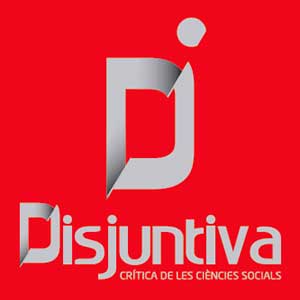Development challenges in South Korea: reflection on the Saemangeum land reclamation project
DOI:
https://doi.org/10.14198/DISJUNTIVA2022.3.1.1Paraules clau:
Saemangeum land reclamation project, development discourse, eco-friendly development, community sustainability, traditional local knowledgeResum
This article examines what the development challenges are in South Korea by specifically analyzing the case of the Saemangeum land reclamation project from a critical approach to development. By exploring the state-led Saemangeum land reclamation project, which in the end adopted the rhetoric of sustainability, the article examines the impact of state development on the environment and community sustainability. It is shown how the traditional local knowledge of sustainable living has vanished, ironically through the ‘ecofriendly’ development project that supposedly recognizes the cultural space of the fishers and the way they relate to each other and nature. By observing the Saemangeum project, which demonstrates the existing development challenges in South Korea, the article questions how to reach a peaceful and sustainable future.Referències
Betts, B. (2018, January 5). Last Murmurations of a Destroyed Wetland. Korea Expose. https://www.koreaexpose.com/saemangeum-wetland-destroyed-korea/
Choi, W.R. (2020, October 07). [단독] 29년 갈등 끝에… 정부 “새만금 바닷물 흘러야 산다 [In Eng. After 29 years of conflict … the government confirms “the necessity of sea circulation to revive Saemangeum”], Hankyoreh. https://www.hani.co.kr/arti/society/environment/964700.html
Dryzek, J. (1997). The Politics of the Earth: Environmental Discourse. Oxford University Press.
Escobar, A. (1995). Encountering Development: The Making and Unmaking of the Third World. Princeton, New Jersey: Princeton University Press.
Esteva, G. (2010). “Development”. In: S. Wolfgang (ed.) The Development Dictionary: A Guide to Knowledge as Power. London: Zed Books, 1-23
Hahm, H. (2004). “Ecological Crisis and Women: The Case of Saemangum Reclamation Project”. ECO, 7, 150-170.
Hahm, H. (2010). “Life after Saemangeum Restoration Project”. Journal of the Korean Society for Marine Environment & Energy, 13 (4), 313-326.
Hahm, H., Jung, M. and Lee, D. (2011). “A Study of Interactional Relations between Marine Ecology and Fishery in the Area of Saemangeum”. ECO, 15 (2), 7-37.
Haque, M. M. (1991). “Sustainable development and environment: a challenge to technology choice decision-making”. Project Appraisal 6 (3), 149-157. https://doi.org/10.1080/02688867.1991.9726812
Jänicke, M. and Weidner, H. (1997). National Environmental Policies: A Comparative Study of Capacity-Building. Springer.
Kho, C., Ryu, J. and Kim, J. (2010). “The Saemangeum: History and Controversy”. Journal of the Korean Society for Marine Environment & Energy, 13 (4), 327-334.
Kim, J. (2011). “Threats to Village Fisheries and the Recognition of Its Values”. Journal of the Island Culture, 38, 245-272.
Kim, R. K. (2007). “Principles of Sustainable Development in Korean Environmental Law: Towards the Earth Charter Principles”. The New Zealand Postgraduate Law e-Journal, 41-44.
Ku, D. and Hong, D. (2011). “A Study on the Social Impacts of Saemangeum Project: Focused on the changes after the completion of the last tide embankment construction in 2006”. ECO, 15 (2), 39-80.
Lee, S.W., Kim, J.R., Kim, J.H., Rho, S.Y., Lee, E.K., Im, K.H. and Choi, Y.C. (2006). The case study of Saemangeum Reclamation Development Project. http://www.nl.go.kr/app/nl/search/common/download.jsp?file_id=FILE-00008153252
Mol, A. and Spaargaren. G. (1993). “Environment, Modernity and the Risk-Society: The Apocalyptic Horizon of Environmental Reform”. International Sociology, 8 (4), 431-459. https://doi.org/10.1177/026858093008004003
Olsson, L., Hourcade, J. and Kohler, J. (2014). “Sustainable Development in a Globalized World”. Journal of Environment &Development 23 (1), 3-14. https://doi.org/10.1177/1070496514521418
Park, J.M. (2019, December 08). 새만금 간척사업, 수산업 13조 8000억 원 손실입혀 [In Eng. Saemangeum land reclamation project caused economic loss on fishing industry], Hyundae Haeyang. http://www.hdhy.co.kr/news/articleView.html?idxno=10852
Park, S.Y. (2015). “Social Conflicts and Hegemonic Articulation on the Saemangeum Reclamation Project in South Korea”. Development and Society 44 (1), 1-27.
Pepper, D. (1998). “Sustainable development and ecological modernization: A radical homocentric perspective”. John Wiley & Sons, Ltd 6 (1), 1-7. https://doi.org/10.1002/(SICI)1099-1719(199803)6:1<1::AID-SD83>3.0.CO;2-8
Piqueras, A.I. (2008). “De la colonización al desarrollo, del paralelo devenir del sistema mundial, la desigualdad, el desarrollo y la cooperación”. In Tirant Lo Blanch (eds) Desarrollo y cooperación: un análisis crítico. Valencia. ISBN 9788498762556: Scientist
Rahnema, M. and Bawtree, V. (1997). The Post- Development Reader. London & New Jersey: Zed Books.
Ramsar. (n.d.). Wetlands and Climate Change. Retrieved November 20, 2020, from https://www.ramsar.org/news/wetlands-and-climate-change#:~:text=In%202018%2C%20Parties%20to%20the,and%20adaptation%20to%20climate%20change
Rist, G. (2008). “The Invention of Development”. In P. Camiller (trans.) The History of Development: From Western Origins to Global Faith. London: Zed Books Ltd, 69-79.
Saemangeum Development and Investment Agency. (n.d.). Saemangeum Project. Retrieved November 16, 2020. from http://www.saemangeum.go.kr/sda/cmm/main/enMainPage.do
Yuk, G.H. (2005). “Social Issues occurred through the Saemangeum project and solution”. Korean Maritime Institute, 246, 18-27.
Descàrregues
Estadístiques
Publicades
Com citar
Número
Secció
Llicència
Drets d'autor (c) 2022 Eun Ah Hong

Aquesta obra està sota una llicència internacional Creative Commons Reconeixement 4.0.



